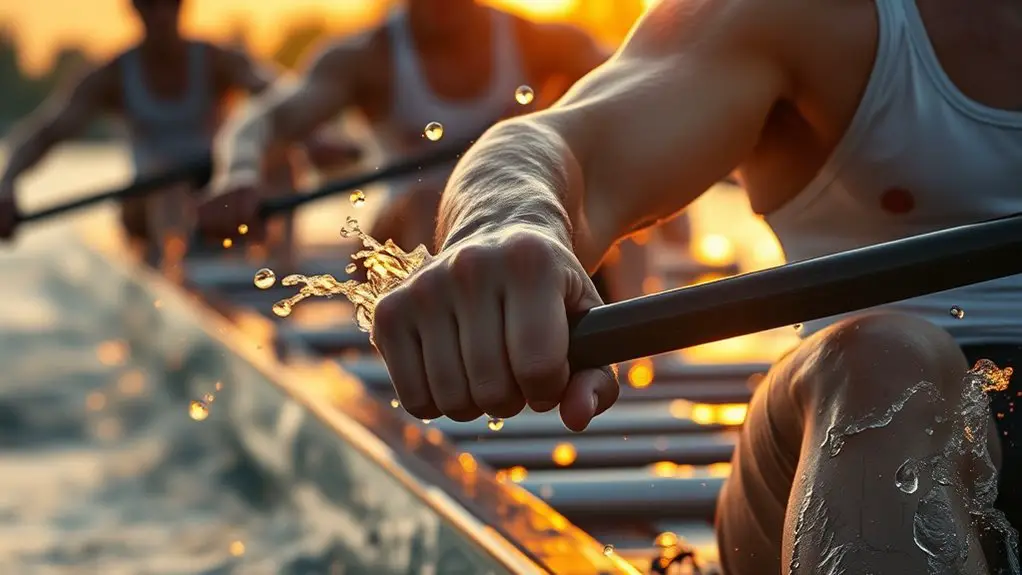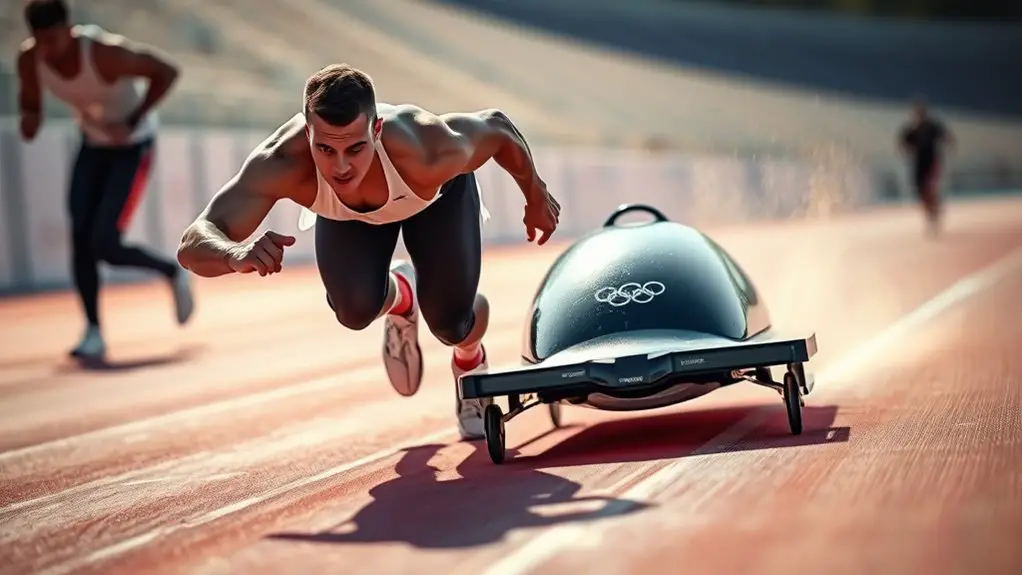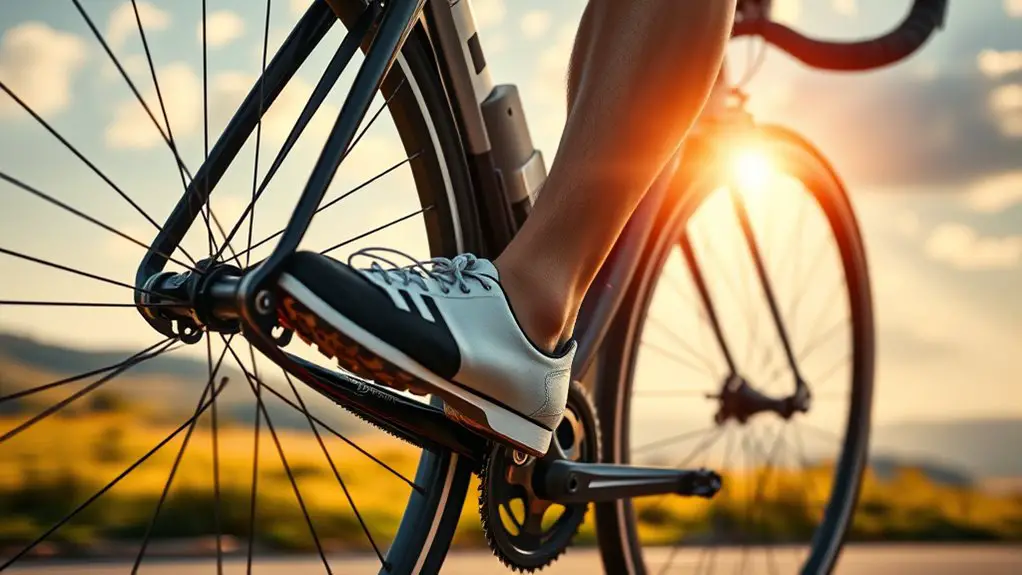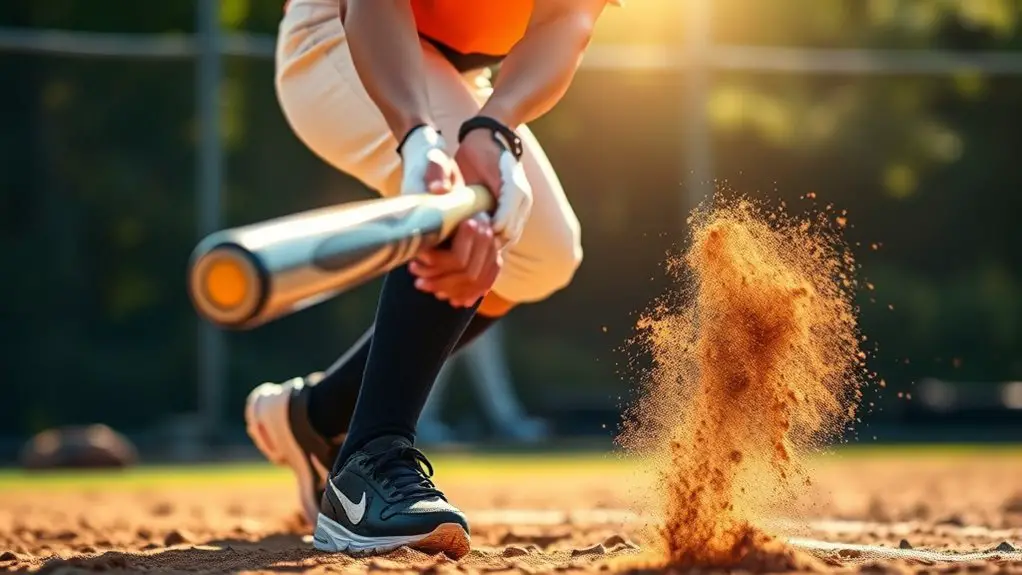To increase your stroke power in rowing, focus on your mechanics. Maintain a firm but relaxed grip on the oar and engage your core and legs during the catch for maximum force. Perfect your hand position for ideal blade entry and practice a smooth rhythm throughout your strokes. Incorporate strength training and resistance exercises to build overall power. Additionally, using video analysis can highlight areas for improvement. There's so much more you can enhance to boost your performance.
Understanding the Mechanics of a Powerful Stroke
When you're aiming to increase your stroke power in rowing, understanding the mechanics behind a powerful stroke is essential. You want to harness every ounce of energy for maximum power generation while maintaining stroke efficiency. Start by focusing on your grip; a firm but relaxed hold on the oar lets you transfer force effectively. During the catch, engage your legs and core, as they're vital for driving the power through your stroke.
As you push off, think about maintaining a smooth, fluid motion. Your arms should follow the rhythm of your legs, ensuring that you're not wasting energy. A strong finish comes from a controlled but assertive release, allowing you to flow into the next stroke seamlessly. By mastering these mechanics, you're not just enhancing your performance; you're embracing the freedom of the water, feeling every surge as you propel forward with confidence and strength. Incorporating squats and deadlifts into your training regimen can significantly boost your overall power output in rowing.
Importance of Core Strength in Rowing
Core strength is the backbone of effective rowing, providing stability and power throughout your stroke. When you focus on enhancing your core stability, you'll notice a significant boost in your rowing performance. Here's how to prioritize core strength:
Enhancing your core strength is essential for improved stability and power in rowing, leading to better performance.
- Engage Your Core: Activate your abdominal muscles during every stroke. This engagement helps transfer power more efficiently from your legs to the oars.
- Incorporate Core Exercises: Add planks, Russian twists, and leg raises to your routine. These exercises build strength and endurance, essential for maintaining form under pressure.
- Maintain Proper Posture: Good posture enhances core stability, allowing you to row with more force and less injury risk. Focus on keeping your back straight and shoulders relaxed. Additionally, strong core muscles improve balance and coordination, crucial for executing powerful strokes effectively.
Enhancing Grip and Hand Position
To maximize your stroke power, it's vital to focus on your grip and hand position on the oar. Your grip strength plays a significant role in how effectively you can transfer energy through the oar into the water. Make sure your hands are relaxed but firm; a tense grip can hinder your performance.
When it comes to hand placement, aim for a comfortable yet confident position. Your hands should be shoulder-width apart, allowing for a natural movement throughout the stroke. This positioning helps you maintain control and enhances your leverage against the water.
Experiment with different grips—try using a lighter touch or adjusting your fingers' placement to find what feels best for you. The right grip can release your potential, giving you more freedom on the water. Developing grip strength improves stability and coordination, and by focusing on these elements, you'll notice an increase in your overall stroke power.
Optimizing Your Catch Phase
Many rowers underestimate the importance of the catch phase in their stroke. It's your moment to harness the water's power, and nailing it can boost your performance considerably. Here's how to optimize your catch:
- Focus on Catch Timing: Timing is everything. Aim to enter the water as your hands reach the point of maximum stretch. A delayed catch can lose precious seconds and energy.
- Perfect Your Water Entry: Your blades should slice into the water smoothly. Avoid splashing; a clean entry means less resistance and more speed.
- Engage Your Core: Your core stabilizes your body for a solid catch. Engage it as you prepare to drive into the stroke, allowing for a more powerful shift. Developing mental toughness can also enhance your focus and resilience during the catch phase, contributing to overall performance.
Perfecting the Drive Phase
To maximize your stroke power, you need to perfect the drive phase. Focus on maintaining proper body position, executing an effective leg push, and ensuring your timing and coordination are spot on. Each element plays an essential role in optimizing your performance on the water. Additionally, incorporating strength training into your routine can enhance your power output during the drive phase.
Proper Body Position
Achieving the ideal body position during the drive phase is essential for maximizing your stroke power in rowing. When you focus on your body alignment and make necessary posture adjustments, you'll feel more in control and powerful. Here are three key points to keep in mind:
- Engage your core: A strong core stabilizes your body, allowing for better energy transfer through the stroke.
- Maintain a straight back: This keeps your posture aligned, preventing strain and enabling a more effective drive.
- Keep your shoulders relaxed: Tension in your shoulders can limit your stroke's efficiency, so let them drop away from your ears.
Effective Leg Push
Mastering the leg push during the drive phase is essential for harnessing maximum power in your rowing stroke. Your leg drive starts with proper foot placement in the foot stretcher. Keep your feet snug but not overly tight, allowing for effective power transfer. As you push, focus on extending your legs fully while maintaining a strong back and core.
Here's a quick guide to perfecting your leg push:
| Aspect | Importance | Tips |
|---|---|---|
| Foot Placement | Stability and control | Verify feet are secure |
| Leg Drive Power | Maximum propulsion | Push through heels |
| Timing | Optimized energy release | Sync with upper body |
Timing and Coordination
Once you've established a strong leg push, the next step is honing your timing and coordination during the drive phase. It's all about feeling the rhythm and guaranteeing that your body moves in harmony with the stroke. Focus on these key elements:
- Stroke Synchronization: Guarantee your arms and legs move together. Your legs should drive as your hands move through the water, creating a seamless connection.
- Body Position: Keep your core engaged and your back straight, allowing for a fluid motion that maximizes power.
- Rhythmic Breathing: Breathe in sync with your strokes—inhale during recovery and exhale during the drive. This keeps your energy flowing.
Perfecting these aspects can elevate your rowing experience and enhance your stroke power!
Incorporating Resistance Training
To boost your stroke power in rowing, incorporating resistance training into your routine is essential. This doesn't just build muscle; it enhances your endurance and explosiveness on the water. Using resistance bands can be a game-changer. They're versatile and can target your key muscles effectively. Additionally, focusing on compound movements will ensure you're training multiple muscle groups simultaneously for optimal performance.
Here's a quick comparison of resistance training methods:
| Method | Benefits |
|---|---|
| Free Weights | Builds overall strength |
| Resistance Bands | Improves flexibility |
| Bodyweight Exercises | Great for endurance |
Practicing Stroke Rate and Rhythm
While focusing on stroke power is essential, practicing stroke rate and rhythm is equally important for maximizing your efficiency on the water. When you've got your stroke rhythm down, everything else falls into place. Here are three tips to help you achieve better stroke consistency:
- Find Your Ideal Stroke Rate: Experiment with different rates during practice. It'll help you discover the sweet spot that feels natural and powerful.
- Use a Metronome: Syncing your strokes with a metronome can enhance your rhythm. This tool helps develop a steady pace, making it easier to maintain consistency.
- Focus on Breath and Timing: Pay attention to how your breathing aligns with your strokes. A relaxed breath will keep your body in sync, allowing for a smoother and more efficient rowing experience.
Analyzing and Adjusting Technique With Video Feedback
Using video feedback can be a game changer for improving your rowing technique. By analyzing your strokes, you can identify key adjustments that will help boost your power. Let's explore some effective video analysis techniques to maximize your performance on the water.
Video Analysis Techniques
Video analysis techniques can be a game-changer in improving your rowing stroke power. By capturing your strokes on video, you can gain insights that lead to effective stroke improvement. Here's how to make the most of it:
- Record Regularly: Film your sessions consistently to track progress and spot patterns in your technique.
- Focus on Key Moments: Analyze critical phases of your stroke, like the catch, drive, and release, to identify areas for enhancement.
- Use Feedback Tools: Utilize apps or software to slow down footage, draw lines, and compare your strokes against elite rowers.
Embrace video analysis as a tool for growth. It helps you see what you might not feel, empowering you to take control of your technique and boost your stroke power.
Key Technique Adjustments
After capturing your strokes on video, the next step is to analyze and adjust your technique for maximum power. Focus on how you can improve power transfer from your legs through the oar into the water. Look for moments where your body isn't in sync, as this can hinder stroke efficiency. Is your catch precise? Are you maintaining a strong core throughout the stroke?
Adjust your hand position, and guarantee your blade enters the water cleanly to avoid drag. Pay attention to your timing and rhythm—your strokes should feel fluid, not forced. Use your video feedback to spot inconsistencies and refine your movements. Small tweaks can lead to a significant boost in power, helping you achieve that exhilarating freedom you're after on the water.
Frequently Asked Questions
How Does Breathing Technique Affect Stroke Power in Rowing?
Breathing's like the wind in your sails; without it, you're stuck. Your breathing patterns can make or break your performance. When you're rowing, engaging your diaphragm properly allows for deeper, more efficient breaths, fueling your body with oxygen. This not only enhances endurance but also amplifies your stroke power. So, if you want that freedom on the water, focus on your breath—it's the engine that drives your strength forward.
What Role Does Mental Focus Play During Rowing Strokes?
Mental focus is essential during your rowing strokes. When you harness mental imagery, you can visualize each powerful stroke, enhancing your performance. Concentration techniques help you stay present, blocking out distractions and allowing you to feel every movement. By sharpening your mental focus, you're not just rowing; you're creating a seamless flow that brings freedom to your technique. Embrace these strategies, and you'll find your strokes become more powerful and effective.
How Often Should I Practice to See Improvement in Stroke Power?
Imagine feeling the rush of power in every stroke, the wind at your back, and the water parting effortlessly. To see real improvement in stroke power, consistency is key. Aim for practice frequency of at least three to four times a week. You'll likely notice progress within a few weeks, but remember, every row you take brings you closer to that feeling of freedom on the water. Stay committed, and you'll release your potential.
Can Nutrition Impact My Rowing Performance and Stroke Power?
Absolutely, nutrition can greatly impact your rowing performance and stroke power. By focusing on carbohydrate timing, you can fuel your workouts effectively, ensuring you have the energy when you need it most. Don't forget about protein intake; it's essential for muscle recovery and growth. By optimizing your diet, you'll feel more energetic and powerful on the water, giving you the freedom to push your limits and achieve your rowing goals.
What Are the Best Recovery Methods After Intense Rowing Sessions?
Recovery after intense rowing sessions is like letting a race car cool down after a high-speed lap. You've pushed hard, so consider active recovery methods, like light jogging or cycling, to keep your blood flowing. Foam rolling can also be your best friend, helping release muscle tightness and improve flexibility. Embrace these techniques, and you'll feel more freedom in your movements, allowing you to bounce back stronger and ready for your next challenge.




